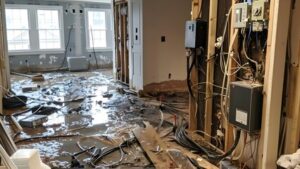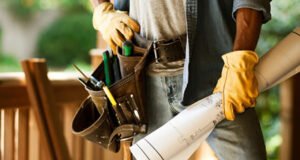Minimally invasive robotic surgery results in less post-op pain, shorter recovery times and lower chances of hernia recurrence than traditional open hernia repair. This procedure uses smaller incisions and a mesh reinforcement patch to heal hernias.

During the surgery, your surgeon sits at a console and operates through small cuts (less than an inch) in your abdomen. The surgeon’s hand movements are translated by the robot into precise actions of the instruments. Read on Robotic Hernia Surgery for more information.
Millions of people worldwide suffer from hernias, which occur when intestines protrude through a weak spot or tear in the muscles of the abdomen or groin. A hernia can be painful and requires surgical intervention. Traditional hernia surgery involves putting a patch or piece of mesh to prevent the intestines from pushing through the hernia hole. But robotic hernia surgery is a less invasive option that may offer better results and a shorter recovery period.
Robotic hernia repair procedures are based on the Da Vinci system, a minimally invasive technique that uses small incisions to perform surgery. In general, surgeons make a few incisions of less than an inch each and insert a tube with a light and camera attached to it, called a laparoscope, into one of the incisions. They then use small surgical tools to perform the operation. The Da Vinci system allows surgeons to view the procedure on a video monitor, which helps them to perform the surgery with greater accuracy and precision.
The Da Vinci surgical system also offers other benefits for patients. For example, it allows surgeons to sew mesh for hernia repair without using tacks in the abdominal wall, which can cause pain and complications. Robotic hernia surgery also usually requires a smaller incision than other laparoscopic procedures. This means patients experience less pain and have a faster return to normal activities.
Despite its advantages, some researchers have raised concerns about robotic hernia repair. A study published in April 2019 compared robotic and standard laparoscopic hernia repair in 113 patients. It found that early clinical outcomes were similar for both robotic and laparoscopic hernia repair, including postoperative pain, quality of life, mobility, cosmesis, and wound morbidity. However, the robotic procedure was more costly and required more operative time than the laparoscopic approach.
The researchers also noted that robotic hernia surgery is not for every patient or surgeon. It requires specialized training to be able to use the equipment effectively. Additionally, there is a risk that the robot could malfunction during the procedure. For these reasons, some patients may be better served by an open surgery procedure.
Procedure
A hernia occurs when intestines protrude through a weak spot or tear in the abdominal muscle causing a bulge that requires surgical intervention. Hernia repair can be performed with open, laparoscopic or robotic surgery. Robotic hernia surgery is a newer technique that allows surgeons to operate through smaller incisions. It is more effective than traditional hernia surgery in restoring patients to their normal lives with faster recoveries.
During the procedure, your doctor will create small tubes called “trocars” into the abdomen through which a camera and instruments are placed. Your doctor will then sit at a console in the operating room and control the instrument movement from there using a high definition 3D monitor. The robotic arms have a range of motion that mimics human hand movements, enabling delicate tissue dissection and suturing with extreme precision.
The first step in hernia surgery is to place the herniated intestine or tissue back inside the body. This can be done with open or laparoscopic surgery, but robotic hernia surgery provides more advanced techniques that reduce the risk of complications and recovery time.
With robotic hernia surgery, a synthetic mesh is used to strengthen the abdominal wall and prevent future hernias. This mesh can be incorporated in the abdomen through three small abdominal incisions instead of one large hernia incision. This significantly decreases the risk of wound complications and infection compared to conventional hernia surgery.
Patients with hernias often experience numbness, pain and a sense of pressure in the abdomen or groin. They can also have a cough that feels like they are not getting enough air. If a hernia is left untreated, it can increase in size over time and lead to more serious complications that require emergency surgery.
The robotic hernia repair procedure is an excellent option for many patients, including those with hernias that have recurred following previous hernia repairs or surgeries. Many patients who have experienced painful recoveries from traditional hernia surgery are thrilled with the benefits of robotic hernia repair. They are relieved they did not have to put off hernia surgery so they can return to work and other activities sooner.
Recovery
For patients undergoing robotic hernia surgery, it is important to follow specific guidelines for recovery. This will help prevent complications and promote healing. Patients should drink plenty of fluids and eat a healthy diet, including foods rich in fiber. This will help avoid constipation, which is a common side effect after hernia repair surgery. It is also a good idea to avoid alcohol and tobacco, as these can interfere with the healing process.
Robotic hernia surgery is typically a short procedure, lasting only about one to four hours. Most patients go home the same day or within a few days. However, if the hernia is severe, an overnight stay may be necessary. Patients should have someone to drive them because they will be groggy following the surgery and can’t safely operate a vehicle.
The surgeon creates a few small incisions to access the hernia and repair it using a mesh-like material that is stronger than tissue. During the surgery, most patients remain awake. Sedation may be used if the patient is anxious or in pain. However, sedation does increase the risk of complication, such as infection or blood clots in the lungs. It’s important to choose a skilled and experienced surgeon to reduce the chance of complications.
In a recent study, researchers found that robotic hernia surgery has a lower infection rate and less pain than traditional surgical methods. The researchers analyzed data from 10 surgeons at two hospitals in their healthcare system who performed elective robotic hernia procedures. They compared hernia-related quality of life measures and other clinical outcomes before and after surgery.
The results showed that most patients who had robotic hernia surgery were discharged the same day. Those who stayed overnight were more likely to have a hernia procedure that required an open approach, such as a hernia repair operation in the umbilical area. However, this study is retrospective and has several limitations, including the number of patients and the type of hernia repairs that were performed. In addition, the number of patients who had an additional procedure was not recorded.
Cost
A common concern with the use of robotic hernia surgery is that it’s more expensive than conventional, laparoscopic methods. However, a recent study comparing robotic hernia repair to open ventral hernia repair demonstrated that robots actually cost less than traditional surgical techniques. The authors of the study examined costs for hernia surgery, post-discharge care and complication rates from both procedures. The results show that while the initial cost of robotic hernia surgery may be higher than traditional hernia surgeries, it is much cheaper in the long run due to a shorter hospital stay and reduced complications.
Robotic hernia surgery involves minimally invasive incisions. Three to four small incisions are made in the abdomen where different instruments are passed through. This allows surgeons to operate more safely and with greater precision than traditional methods. It also reduces the risk of infection and wound complications. In addition, robotic hernia repair can often be performed on an outpatient basis allowing patients to go home sooner.
In the study, 113 patients with a unilateral hernia were enrolled in either standard laparoscopic or robotic transabdominal preperitoneal (TAP) hernia repair. Patients requiring conversion to an open procedure or undergoing simultaneous procedures were excluded. The primary outcomes included postoperative pain, health-related quality of life, mobility, and cosmesis. Secondary outcomes included operative time and cost, surgeon frustration, and surgeon mental workload.
The hernias most commonly treated by robotic hernia surgery are groin hernias and abdominal wall ventral hernias (VHR). In the case of groin hernias, a bulge of muscle or fat protrudes through a weak area in the abdominal muscle. In the case of an abdominal wall hernia, the surgeon creates a space inside the abdomen to place a piece of mesh to reinforce the area and prevent future herniations.
In cases of a ventral hernia, the stomach pushes upward through a hole in the diaphragm. This can trigger symptoms such as chronic acid reflux and chest pain. With robotic hernia surgery, the surgeon can return the stomach to its proper place in the abdomen and repair the defect in the diaphragm. In most cases, patients can go home the same day.



